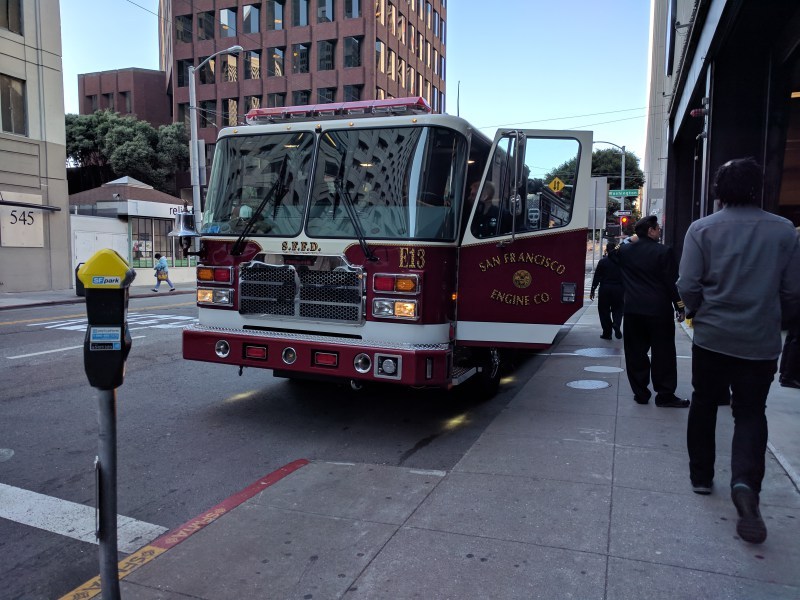If you've ever made the case for a traffic calming project in your city, odds are you've butted heads with your local fire department.
Fire officials often insist on wide clearance to operate their large vehicles, which can be at odds with the principles of safe street design. When cities want to narrow car lanes or add bike lanes to make streets safer for walking and biking, fire departments often water down or even stop the plans before they can get started. Even though traffic fatalities outnumber fire deaths in the U.S. by more than 10 to 1, fire officials tend to get the final word.
Other times fire safety is just a pretext to avoid implementing street redesigns that elected officials see as a political liability. That's the story in Baltimore, where the city has delayed work on major bikeways. Residents upset about the reduction in on-street parking complained first, then the city cited clearance for fire trucks as the reason for backing off the project.
Not every city is as change-averse as Baltimore, however. And in some places, the fire departments are active partners in street redesign initiatives.
One of those cities is Portland, where the Fire Department participates in the street design process led by the city's Bureau of Transportation.
As Portland has built out bike lanes, narrowed car lanes, and added pedestrian safety measures, the fears about slower response times did not materialize, says Fire Chief Mike Myers.
"There has been no reduction in response times by working with urban planners and transportation leaders to build out Portland," Myers said on a recent webinar hosted by the National Association of City Transportation Officials.
It also helps to have fire response vehicles that fit well on narrower streets conducive to walking and biking. Compared to European cities, American fire departments use bigger vehicles with wider turning radii.
It doesn't have to be that way, said Jonas Chiarenza and Alex Epstein, analysts at U.S. DOT's Volpe Center. The fire trucks in use in Europe are more maneuverable without sacrificing the capacity to carry water or the height of their ladders.
So far, few American cities have opted for these smaller fire vehicles, but San Francisco is an exception. The city recently purchased eight smaller "Vision Zero" engines made by Ferrara Fire Apparatus that can execute sharper turns than typical American fire trucks.
Even if cities don't purchase new trucks, they should still aim to design streets for safe movement, not for the ease of large vehicles, Epstein and Chiarenza said. For instance, intersections can have shorter crossing distances and tighter corners while remaining negotiable for fire trucks, as long as the stop bars are set far enough back to allow trucks to complete turns.





